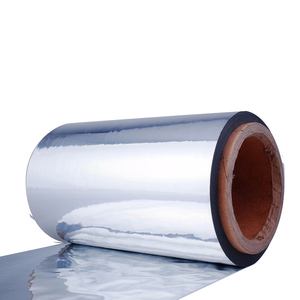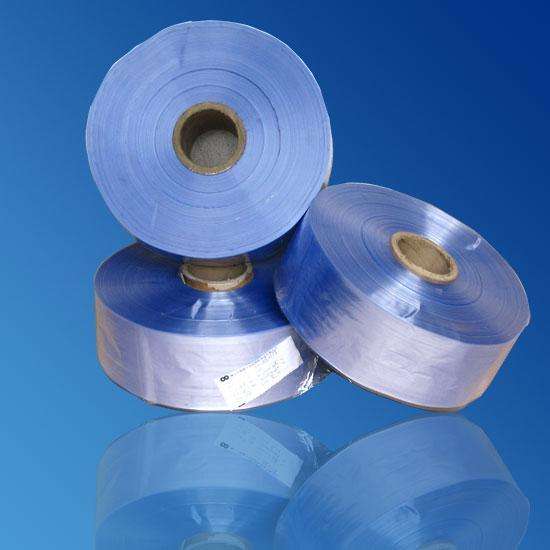The process of shrink wrapping is essential for many businesses, but the optimal temperature requirements for shrink film are often misunderstood. This article will help you understand the ideal conditions for successful shrink wrapping.
Shrink film can be used for many applications, but ideal temperature requirements for optimal shrinkage vary. Generally, the film should be heated at a temperature between 275-325°F for 2-5 seconds. This ensures the film shrinks evenly and quickly, providing a strong, secure seal.

Shrink film is an essential part of the packaging and must be heated to specific temperatures for an optimal result. Understanding the optimal temperature requirements for shrink wrap is key to producing a quality package.
Overview of temperature requirements for stretch film
Stretch film is a highly versatile material used to secure and protect items during shipping and winter storage. A key factor in the successful use of stretch film is temperature control. To ensure the film performs optimally, temperature requirements must be taken into consideration when choosing, storing, and applying the material.
Generally speaking, the ideal temperature range for storing and applying the stretch film is between 65°F and 95°F. If the temperature falls below 65°F, the film may become too brittle and break during application. If the temperature exceeds 95°F, the film may become too soft and may not adhere properly.

In addition, sudden temperature changes can cause the film to become brittle or sticky, resulting in poor performance especially in a direct sunlight. For this reason, it is important to store stretch film in a cool, dry environment and to make sure that any equipment used for application is at the appropriate temperature.
Finally, the ambient temperature of the area where the film is being applied should also be considered. If the temperature is too warm, the film may become too soft and not adhere to the item properly. Conversely, if the temperature is too cold, the film may become too brittle and may not stretch properly.
Types of Shrink Film
A. PVC
PVC shrink wrap is a type of plastic film used for packaging products such as in direct food contact, beverages, pharmaceuticals, toys, and hardware. It is made from polyvinylchloride (PVC) resin and is available in a variety of thicknesses, colors, and sizes. PVC shrink wrap is an economical and durable choice for product packaging and creates a secure, tamper-resistant seal.
It is also resistant to moisture, grease, and abrasion and can be printed with product information, logos, and colors. PVC shrink film is easy to use and can be applied to products with a heat gun or a shrink tunnel. With its many benefits, PVC shrink film is a popular choice for packaging applications.
B. Polyolefin
Polyolefin shrink film is a type of plastic packaging material that shrinks when exposed to heat gun or heat tunnels. It is a versatile, lightweight, and cost-effective alternative to other shrink-wrap materials such as PVC and polyethylene. Polyolefin shrink film is used in a variety of industries, including food and beverage, medical, retail, and agriculture.
It is highly resistant to moisture, punctures, and tears, making it ideal for protecting products from the elements. Additionally, its low melting temperature allows for a fast and efficient packaging process using a heat gun or a shrink tunnel especially for frozen foods. Polyolefin shrink film is an excellent choice for businesses looking for an efficient, cost-effective, and reliable packaging solution.
C. Polyethylene
Polyethylene shrink film is a type of plastic film used for various packaging applications. It is a thin, flexible film made from polyethylene that shrinks tightly around the product when there is is too much heat using a heat tunnel. It is often used to package items such as in direct food contact, beverages, pharmaceuticals, and other consumer goods.
It is also used to bundle and protect products for shipping. Polyethylene shrink film is a cost-effective packaging option that offers superior protection and product visibility. It is also highly resistant to moisture, chemicals, and tearing, making it an ideal choice for a variety of packaging needs.

Temperature Requirements for Shrink Film
A. PVC
1.Shrink Temperature
It is usually between 75-85 degrees Celsius and is used to shrink the film around a product or package using a heat tunnel. The temperature is important to ensure the film shrinks properly and securely especially in a hot weather or in a hot trailer.
2.Seal Temperature
PVC shrink film seal temperatures vary depending on the type of film being used. Generally, a minimum of 80°C is required for PVC film to achieve a strong seal. Lower temperatures can be used for lighter films and higher temperatures for thicker films. The temperature of the sealer should be adjusted according to the thickness of the film to ensure the best seal.
B. Polyolefin
1.Shrink Temperature
Polyolefin shrink temperature requirements vary depending on the particular product. Generally, temperatures range from 250°F (121°C) to 375°F (190°C). The temperature required for optimum shrinkage will also depend on the size of the product and the thickness of the film using a heat tunnel. The thicker the film, the higher the temperature required to achieve the desired degree of shrinkage.
2.Seal Temperature
Polyolefin shrink film seal temperature requirements vary depending on the thickness of the film, the length of the seal, and the type of sealer used. Generally, the seal temperature should be set between 200°F and 250°F.
It is important to note that the temperature should not exceed 250°F and that the sealer must be monitored to ensure that the film does not burn. Additionally, it is recommended that the sealer be tested on a sample of the film before use.

C. Polyethylene
1.Shrink Temperature
Most polyethylene shrink wraps require temperatures between 250 and 375 degrees Fahrenheit to shrink properly. Some can even be used with lower temperatures, but this will usually result in a less effective finish.
2.Seal Temperature
The temperature requirements for polyethylene sealing depend on the type of polyethylene used, but generally range from -60℃ to +90℃. The seals should be kept within temperature ranges that are suitable for the polyethylene used to ensure proper performance and durability.
Factors that Affect Temperature Requirements
A. Thickness
The thickness of a shrink film can have a great effect on the temperature requirements needed to properly shrink the film onto a product. Thinner films typically require lower temperatures, while thicker films require higher temperatures to properly shrink the film around the product.
This is because thicker films require more heat to shrink. When the temperature is too low, the film may not shrink evenly or may not shrink at all. Additionally, the temperature should not be set too high as this can cause the film to be over-shrunk, resulting in a product with an unattractive appearance.
It is important to use the correct thickness of the film and the appropriate temperature to ensure an attractive and effective shrink-wrapping process.
B. Width
The width of a shrink film can have a major impact on the temperature requirement for a shrink-wrapping process. A shrink film with a wider film width requires a higher temperature for shrinkage than a film of a narrower width.
This is because a wider film has more surface area and therefore requires more energy to shrink. By adjusting the width and thickness of the shrink films, the temperature requirement can be optimized to produce the best results.
C. Length
The length of a shrink film can affect temperature requirements because the longer the film, the more heat it requires to shrink. The film needs to be heated to the point that it shrinks uniformly and securely around the product.
Longer films require more heat than shorter films. Additionally, longer films require more time to reach the desired shrink temperature, which can be a limiting factor for certain applications. If the temperature is too low, the film will not shrink properly, leading to a poor finish and increased waste.
Temperature control for stretch film
Methods
There are several methods for controlling the temperature of stretch film, such as using insulated blankets, heated rollers, or adding cooling fans. A cool roll can help to keep the film at a consistent temperature, while insulated blankets can provide a layer of insulation to prevent the film from cooling down too quickly.
Cooling fans can help to maintain the temperature of the film while it is being stored while helping to reduce the risk of overheating. By using these methods, the stretch film can be kept at the optimal temperature and can produce a high-quality product.
Importance
Temperature control helps to maintain the integrity of the plastic film as well as the quality of the product being wrapped. It also helps to reduce waste by ensuring that the plastic film does not become brittle or tear during application. Proper temperature control also helps to optimize the amount of stretch and cling properties of the film, resulting in better wrapping and protection of the product.
Conclusion
Understanding the optimal temperature requirements for shrink wrap is crucial for successful packaging, as the temperature is a determining factor in shrinking the film and achieving the desired appearance and properties. It is important to understand the various temperature requirements of different shrink films.














